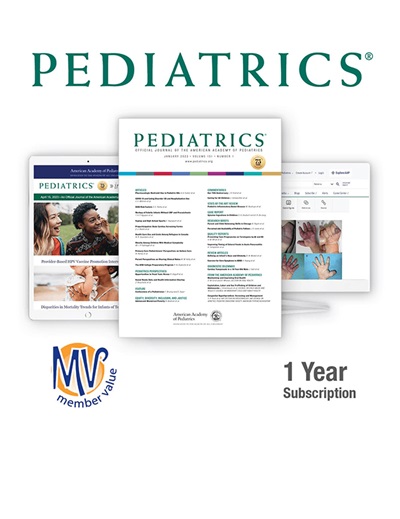0 ~ 23月龄呼吸道合胞病毒住院患儿的特点
IF 6.4
2区 医学
Q1 PEDIATRICS
引用次数: 0
摘要
背景与目的呼吸道合胞病毒(RSV)是幼儿住院的主要原因。建议所有8个月以下的婴儿和8至19个月的儿童在进入第二个RSV季节时严重RSV风险增加。需要更多的数据来确定8至19个月大的儿童患严重疾病的风险增加。方法呼吸道合胞病毒住院监测网络是一个基于人群的监测系统,在12个州捕获实验室确认的rsv相关住院病例。我们采用χ2检验和logistic回归比较了2022-2023年季节0 - 23月龄儿童的人口统计学和临床特征,以及12 - 23月龄儿童的严重程度(未入住重症监护病房[ICU]、入住ICU或延长[≥3天]入住ICU)。结果随机抽取2022-2023年住院患儿3659例,0 ~ 2月龄、3 ~ 11月龄和12 ~ 23月龄患儿分别占31.2%、40.0%和28.9%。与0至2个月的儿童相比,3至11个月和12至23个月的儿童更有可能患有至少一种潜在疾病(UMC)(分别为3.4%,12.6%,23.4%;p < 0.05)。ICU住院时间较长的12 ~ 23月龄患儿发生气道异常、心血管疾病(CVD)、唐氏综合征(伴或不伴CVD)、饲管依赖的可能性高于非ICU住院患儿(P < 0.05)。所有人都是05)。结论与0 ~ 2月龄儿童相比,12 ~ 23月龄住院儿童中sumcs的发生率更高;延长ICU住院时间与气道异常、心血管疾病、唐氏综合征和饲管依赖相关。本文章由计算机程序翻译,如有差异,请以英文原文为准。
Characteristics of Children Aged 0 to 23 Months Hospitalized With Respiratory Syncytial Virus.
BACKGROUND AND OBJECTIVES
Respiratory syncytial virus (RSV) is a leading cause of hospitalization among young children. Nirsevimab is recommended for all infants younger than 8 months and children aged 8 to 19 months who are at increased risk of severe RSV entering their second RSV season. Additional data are necessary to identify children aged 8 to 19 months at increased risk for severe disease.
METHODS
The Respiratory Syncytial Virus Hospitalization Surveillance Network, a population-based surveillance system, captures laboratory-confirmed RSV-associated hospitalizations in 12 states. We compared demographics and clinical characteristics of children aged 0 to 23 months by age category, and of children aged 12 to 23 months by severity (not admitted to the intensive care unit [ICU], admitted to the ICU, or with prolonged [≥3 days] ICU admission) during the 2022-2023 season using χ2 tests and logistic regression.
RESULTS
Among 3659 randomly sampled hospitalized children in 2022-2023, 31.2%, 40.0%, and 28.9% were aged 0 to 2, 3 to 11, and 12 to 23 months, respectively. Compared with children aged 0 to 2 months, children 3 to 11 and 12 to 23 months were more likely to have at least 1 underlying medical condition (UMC) (3.4%, 12.6%, 23.4%, respectively; P < .05). Children aged 12 to 23 months with prolonged ICU admission were more likely to have airway abnormalities, cardiovascular disease (CVD), Down syndrome (with or without concomitant CVD), and feeding tube dependence than those without ICU admission (P < .05 for all).
CONCLUSIONS
UMCs were more frequently identified among hospitalized children aged 12 to 23 months compared with children 0 to 2 months; prolonged ICU admission was associated with airway abnormalities, CVD, Down syndrome, and feeding tube dependence.
求助全文
通过发布文献求助,成功后即可免费获取论文全文。
去求助
来源期刊

Pediatrics
医学-小儿科
CiteScore
12.80
自引率
5.00%
发文量
791
审稿时长
2-3 weeks
期刊介绍:
The Pediatrics® journal is the official flagship journal of the American Academy of Pediatrics (AAP). It is widely cited in the field of pediatric medicine and is recognized as the leading journal in the field.
The journal publishes original research and evidence-based articles, which provide authoritative information to help readers stay up-to-date with the latest developments in pediatric medicine. The content is peer-reviewed and undergoes rigorous evaluation to ensure its quality and reliability.
Pediatrics also serves as a valuable resource for conducting new research studies and supporting education and training activities in the field of pediatrics. It aims to enhance the quality of pediatric outpatient and inpatient care by disseminating valuable knowledge and insights.
As of 2023, Pediatrics has an impressive Journal Impact Factor (IF) Score of 8.0. The IF is a measure of a journal's influence and importance in the scientific community, with higher scores indicating a greater impact. This score reflects the significance and reach of the research published in Pediatrics, further establishing its prominence in the field of pediatric medicine.
 求助内容:
求助内容: 应助结果提醒方式:
应助结果提醒方式:


